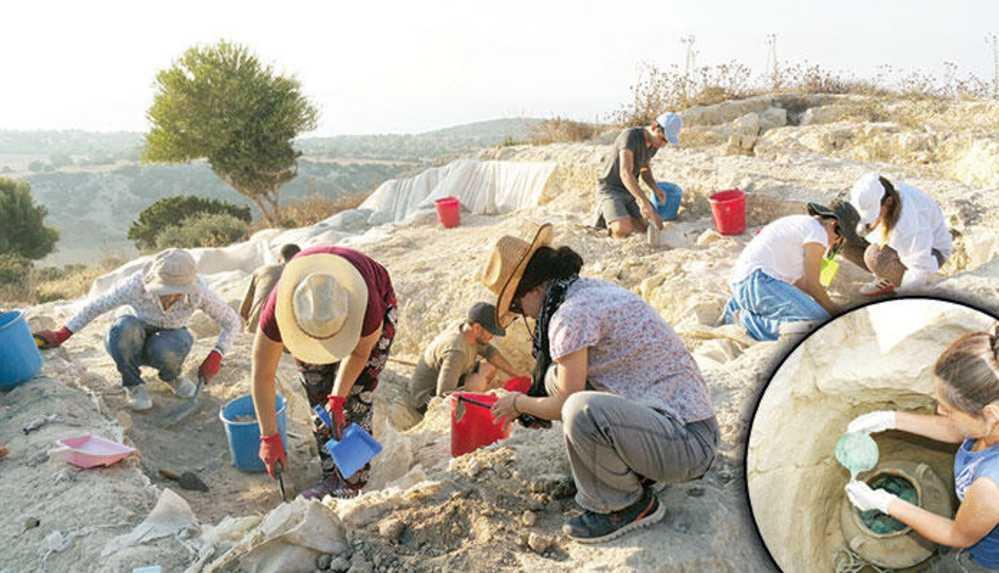
Archeologists have unearthed some 137 pieces of artifacts dating back 3,200 years in the northern part of Cyprus.
The artifacts are believed to be the widest range of works from the late Bronze Age in the entire eastern Mediterranean region.
Bülent Kızılduman, head of the eastern Mediterranean Cultural Heritage Research Center (DAKMAR), said that they investigated the political and commercial relations between Cyprus and Anatolian civilizations within the scope of the excavations carried out in the Karpas peninsula.
The excavation site called King’s Hill is located in the village of Kaleburnu (Galinoporni) on a high hill and is nearly one and a half kilometers from the sea.
Discovered by academics from Eastern Mediterranean University (EMU) during a nature walk in 2004, striking information about the history of Cyprus was obtained during the excavations at the site in the last 15 years.
Archaeological excavations initiated in cooperation with the University of Tübingen continue with participants from different countries such as the Czech Republic, Italy, Germany and Turkey.
“The site belongs to one of the important kingdoms dating back 3,200 years from the present,” Kızılduman said, adding that a large number of bronze artifacts were unearthed in the ongoing excavations.
“We aim to preserve these works first in our restoration and conservation laboratory in DAKMAR and then exhibit them in the museum we plan to establish under the roof of EMU,” he noted.
“A tablet fragment, inscriptions on ceramic pots, a stamped seal, some weights used in trade and many luxury materials unearthed inside a building are quite remarkable,” he added.
The academic also stressed that some of the works were very common in the Levant region.